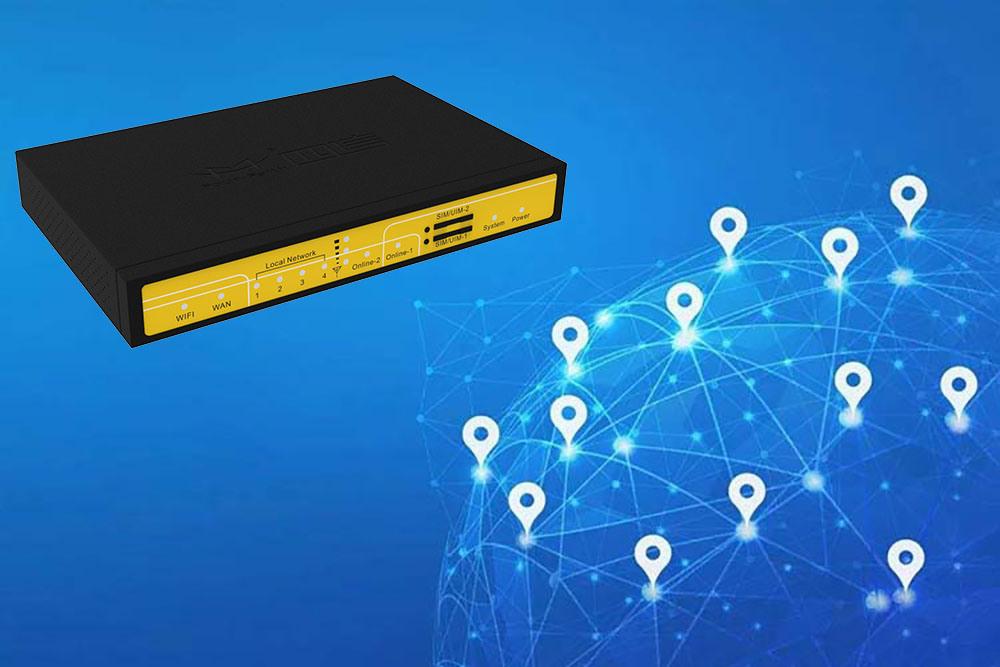SFP optical module is a hot-swappable small package module in SFP package, the maximum rate can reach 10.3G, and the interface is LC. SFP optical modules are mainly composed of lasers. SFP classification can be divided into rate classification, wavelength classification, and mode classification.
1. Introduction of SFP optical module
SFP is the abbreviation of SMALL FORM PLUGGABLE (small pluggable), which can be simply understood as an upgraded version of GBIC. The SFP module is half the size of the GBIC module and is only the size of a thumb. More than double the number of ports can be configured on the same panel. The other functions of the SFP module are basically the same as those of the GBIC. Some switch manufacturers call the SFP module a miniature GBIC (MINI-GBIC)
The composition of the SFP optical module is as follows:
The laser (including the transmitter TOSA and the receiver ROSA) is composed of a circuit board IC and external accessories. The external accessories are composed of a shell, a base, a PCBA, a pull ring, a buckle, a unlocking piece, and a rubber plug. For the convenience of identification, the pull ring is generally used. The color identifies the parameter type of the module.
2. Classification of SFP optical modules
2.1 Rate Classification
According to the speed, there are 155M/622M/1.25G/2.125G/4.25G/8G/10G, 155M and 1.25G are more used in the market, 10G technology is gradually maturing, and the demand is developing with an upward trend.
2.2 Wavelength Classification
According to the wavelength, there are 850nm/1310nm/1550nm/1490nm/1530nm/1610nm, the wavelength of 850nm is SFP multi-mode, the transmission distance is below 2KM, the wavelength of 1310/1550nm is single-mode, and the transmission distance is more than 2KM. Three wavelengths are less expensive than the other three.
If the bare module is not marked, it is easy to be confused. Generally, manufacturers will distinguish the color of the pull ring. For example, the black pull ring is multi-mode and the wavelength is 850nm; blue is the module with a wavelength of 1310nm; yellow is a module with a wavelength of 1550nm. ; Purple is the module with wavelength 1490nm, etc.
2.3 Pattern Classification
2.3.1 Multimode
Almost all multimode fibers are 50/125um or 62.5/125um in size, and the bandwidth (the amount of information transmitted over the fiber) is typically 200MHz to 2GHz. Multimode optical transceivers can transmit up to 5 kilometers through multimode optical fibers. Light-emitting diodes or lasers are used as light sources. The pull tab or body color is black.
2.3.2 Single mode
Single-mode fiber is 9-10/125µm in size and has unlimited bandwidth and lower loss than multimode fiber. The single-mode optical transceiver is mostly used for long-distance transmission, sometimes reaching 150 to 200 kilometers. LDs or LEDs with narrow spectral lines are used as light sources. The pull tab or external color is blue, yellow or purple.
Difference and connection
Single-mode fiber is cheap, but single-mode equipment is significantly more expensive than comparable multi-mode equipment. Single-mode equipment typically operates on both single-mode fiber and multi-mode fiber, while multi-mode equipment is limited to operation on multi-mode fiber.
The 10G module has undergone development from 300Pin, XENPAK, X2, and XFP, and finally realized the transmission of 10G signals with the same size as SFP, which is SFP+. With its advantages of miniaturization and low cost, SFP meets the high-density optical module requirements of equipment. Since the standard was pushed in 2002, it has replaced XFP to become the mainstream of the 10G market in 2010.
3. Comparison of SFP optical modules
3.1 SFP+ and SFP
3.1.1 SFP and SFP+ have the same dimensions;
3.1.2 SFP protocol specification: IEEE802.3, SFF-8472;
3.2 SFP+ and XFP
3.2.1 SFP+ and XFP are both 10G fiber optic modules, and can communicate with other types of 10G modules;
3.2.2 Because of its smaller size, SFP+ integrates signal modulation functions, serial/deserializer, MAC, clock and data recovery (CDR), and electronic
Dispersion compensation (EDC) functionality moved from the module to the motherboard card;
3.2.3 XFP compliant protocol: XFP MSA protocol;
3.2.4 Protocols compliant with SFP+: IEEE 802.3ae, SFF-8431, SFF-8432;
3.2.5 SFP+ is a more mainstream design.
3.3 SFP+
3.3.1 SFP+ has a more compact form factor than X2 and XFP packages (same size as SFP);
3.3.2 It can be directly connected with the same type of XFP, X2, XENPAK;
3.3.3 The cost is lower than XFP, X2, XENPAK products.




















